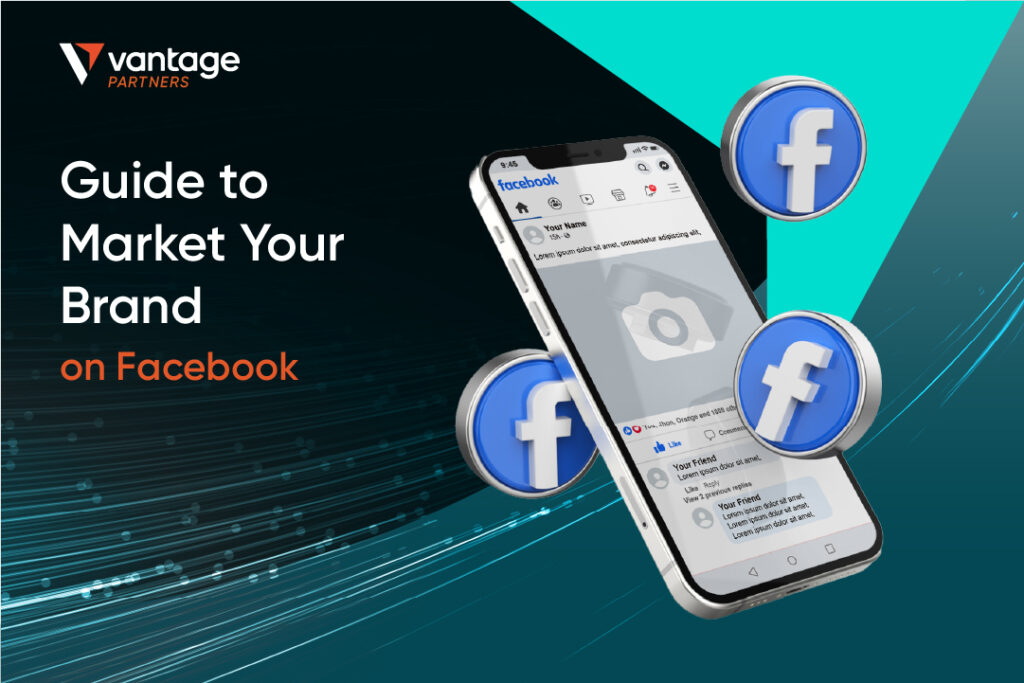
There are plenty of ways you can build and grow your business, and one of the most crucial parts of it is bringing in customers. In this article, we’ll walk you through what you can do as a business to market yourself on Facebook, as well as the types of posts you can consider.
Why market your brand on Facebook?
Before diving in, let’s first discuss why Facebook remains relevant in today’s social media space, when platforms like TikTok have been gaining in popularity.
- Build brand awareness – You can use images and videos in Facebook ads to support your branding. As Facebook is an interest-based platform, where it is commonly used for entertainment purposes along with looking for groups or communities with similar interests, Facebook’s purchase intent is not as high as Google’s. [1] This is how imagery will allow you to stand out in users’ feeds through emotional marketing.
- Cost-effective and Versatility – Because Facebook ads allow for precise targeting, you can be confident that you’re making the most of your advertising budget. Besides that, with the various format options and goals available, you can use Facebook ads to target users at every stage of your marketing funnel.
- Gain audience insights – People spend a great deal of time on Facebook and employ it for various purposes in their daily lives. The information obtained from Facebook ads provides invaluable customer insights that can be used to inform your overall strategy.
Step-by-step guide to marketing on Facebook
Here’s how to market on Facebook, broken down into 7 key points:
1. Define your goals
What do you hope to achieve with this Facebook page? How will a Facebook page support your overall business objectives? Does your goal include creating more valuable content to increase brand awareness, or to increase sales and lead generation?
When starting out on a new platform, defining clear goals will set the direction for your page strategy, help you better understand the type of posts you will have, and the type of audience engagement you hope to achieve.
2. Know your audience
Facebook marketing can very well be pointless if you don’t reach the right people. That is why identifying the right target audience is critical.
Do some market research to understand your target market and find out their demographics; this information includes age, region, location, interests and hobbies, language spoken, etc. To uncover this information, consider your customers, the ones who’ve already purchased your product/service, even prior to you joining Facebook.
3. Plan your content strategy
You’ll need to know what you want to post, and what kind of posts you want to put out for your audience to see. The posts can include short tutorials, reviews, industry news, new products and promotions.
Here are two rules for you to consider when strategising your content.
- The rule of thirds is where one-third of your content is your ideas/stories, another one-third is the interaction with your audience, and the last third is promotional content. [2]
- The 80/20 rule: 80% of your content should aim to inform, entertain and educate, while the remaining 20% can be saved for promotional content. [3]
4. Proactively engage with your audience
Continuously engage with your audience by replying to their comments, which helps to make your audience feel heard, and to keep the discussion on your posts going. Take your posts to the next time by posting polls, asking questions through your Facebook Stories or through posts and even spark conversations by asking your audiences to comment in the comment section.
5. Determine your Facebook ads strategy
When determining your ads strategy, the goal is to aim for higher brand awareness. This focuses on two things, which are:
1) to ensure that your ads are cost-effective and
2) ensuring they are relevant to the target audience.
Create ads that are valuable to customers and solve their pain points instead of focusing solely on making your ads sales-based, or even clickbait in nature. Most importantly, don’t forget to keep your Facebook ad content fresh and updated constantly.
6. Track and analyse your results
You’ve already set your goals, and you have your content strategy and ads strategy all planned out, now what?
To be consistent in ensuring that your page grows, tracking and analysing the outcome is extremely important. When you analyse the metrics you identified during your goal setting, you will be able to discover insights about the type of content that intrigues your audience and from there, decide how to make improvements.
7. Promote your page
Run Facebook contests, prizes, or promotions as a way to not only increase your brand awareness, but as a form of promoting your business. You can collect names, contact information, and answers to other research questions when people sign up or agree to participate.
Besides running contests, you can conduct influencer marketing campaigns in order to further boost page promotion. There are a variety of ways you can do this, including affiliate marketing, having sponsored social media content, getting influencers to do unboxing or reviews, brand ambassador programs as well as providing influencers with discount codes for their audiences to use.
Now that you know how to market your Facebook page, we’ve listed the types of posts to help you decide which ones are the best to create your content.
Types of Posts
When using Facebook, there are a handful of variations you can consider when crafting a post. Here are seven types you can consider when posting on Facebook.
1. Text posts
Text posts can come in the form of status updates or text-based posts, and they are good as conversation starters, educating your followers and sharing important information.
2. Image posts
Images are one of the most basic post formats on Facebook. They allow businesses to promote their products, services, or brands using single images. Image ads are ideal for campaigns with strong visual content that can be displayed in a single image. Illustrations, design, or photography could be used to create these images. They are appropriate for any stage of the sales funnel, whether you want to increase brand awareness or promote a new product launch.
3. Video posts
Similar to image posts, video posts let you use a single video to showcase your products, services, or brand. They’re particularly useful for product demos, tutorials, and displaying moving elements.
4. Link posts
Link posts allow you to share external links, such as your website or blog, in your posts. These posts are best used to promote your own website content or if you just want to share other people’s external content that you think your followers might benefit from. This can also be seen as an extension of text posts, where you include both text and a link as the call-to-action.
5. Facebook stories
Stories allow for more creative freedom than traditional image or video posts. Emojis, stickers, filters, video effects, and even augmented reality can be used by businesses. There are plenty of options for you to engage with your audience in Stories as well, such as the swipe up link function or adding in polls.
6. Facebook Live
Facebook Live is a unique form of content compared to your typical posts, as it allows your brand to reach your followers organically. It is also a great opportunity for increased interactions through answering questions and product demonstrations.
7. Pinned posts
Pinned posts allows you to pin specific posts to the top of your page, such that when people visit your page, the first post they will see will be the one that is pinned. You can use this for high-performing posts, or to highlight important information that your followers may need to know.
Posts that you might want to pin can also include ongoing promotions, new products or even FAQs that you would like new visitors to see when they land on your Facebook page for the first time. Do take note that only one pinned post is allowed at a time.
Now that you’ve got some ideas for starting marketing on Facebook take your business to the next level with the free tools available out there to help you create them! Don’t forget to follow us on Vantage Partners’ social media channels for more marketing tips or browse our blog for more educational materials to grow your affiliate revenue.
References:
- “Facebook Ads vs Google Ads for Ecommerce: Which is Better in 2022? – Toccara Karizma.” https://toccarakarizma.com/blog/facebook-ads-vs-google-ads/. Accessed 22 December 2022
- “How to Use the Social Media Rule of Thirds – Marketing Partners.” https://www.marketing-partners.com/conversations2/how-to-use-the-social-media-rule-of-thirds. Accessed 22 December 2022
- “The 80/20 Rule, Explained – Brandmuscle.” https://www.brandmuscle.com/resources/the-80-20-rule-explained/. Accessed 22 December 2022
Disclaimer
Any information/content/material is intended for educational purposes whereas Vantage does not represent or warrant that the material provided here is accurate, current, or complete and cannot be held responsible for any miscalculation/mistake or omission. Any reliance on such information is strictly at your own risk. The information provided here, whether from a third party or not, is not to be considered as a recommendation; or an offer to buy or sell; or the solicitation of an offer to buy or sell any financial instruments; or to participate in any specific trading strategy and/or as investment advice. Any research provided does not have regard to the specific investment objectives, financial situation and needs of any specific person who may receive it. Please seek advice before making any trading decision. Past performance is not an indication of future performance. The information provided is not intended for distribution to, or use by, any person in any country where such distribution/use would be contrary to local laws.
